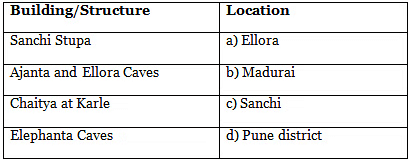Worksheet: Culture and Science | Footprints Class 6: Book Solutions, Notes & Worksheets PDF Download
Q1: Multiple Choice Questions (MCQs)
(i) What is the central theme of the Ramayana?
(a) The life of Buddha
(b) The struggle between Kauravas and Pandavas
(c) The story of Lord Rama and Sita
(d) Tales of previous lives of Buddha
(ii) Who is the author of Silapaddikaram?
(a) Ved Vyas
(b) Ilango Adigal
(c) Kalidasa
(d) Sattanar
(iii) Which of the following is NOT a Purana mentioned in the text?
(a) Vishnu Purana
(b) Vayu Purana
(c) Matsya Purana
(d) Panchatantra
(iv) What is the moral purpose of the Panchatantra stories?
(a) Historical accounts
(b) Entertainment only
(c) Moral lessons
(d) Religious rituals
(v) Who is considered the greatest poet and dramatist of classical Sanskrit in the text?
(a) Valmiki
(b) Ilango Adigal
(c) Ved Vyas
(d) Kalidasa
Q2: Fill in the Blanks
(i) Aryabhata explained that days and nights were caused by the ____________ of the Earth on its axis.
(ii) Varahamihira stated that the Moon rotates around the ____________ and the Earth around the ____________.
(iii) In the field of mathematics, ancient Indians contributed the notational system, the decimal system, and the concept of ____________.
(iv) What is the most famous work of Varahamihira mentioned in the text?
(v) The three greatest contributions of ancient Indians in mathematics include the notational system, the decimal system, and the concept of ____________.
Q3: Match the Column (In a Table)

Q4: True/False
(i) The Ramayana and Mahabharata are the two greatest epics of Indian literature.
(ii) The Puranas were composed in Tamil and compiled around the 4th century CE.
(iii) Aryabhata developed a scientific explanation for eclipses.
(iv) The stupa at Sanchi was originally built by the Sunga empire.
You can access the solutions to this worksheet here.
|
65 videos|127 docs|25 tests
|
FAQs on Worksheet: Culture and Science - Footprints Class 6: Book Solutions, Notes & Worksheets
| 1. What is the relationship between culture and science? |  |
| 2. How does culture affect scientific research? |  |
| 3. Can scientific advancements change cultural practices? |  |
| 4. Why is it important to study both culture and science together? |  |
| 5. What role does education play in bridging culture and science? |  |





















